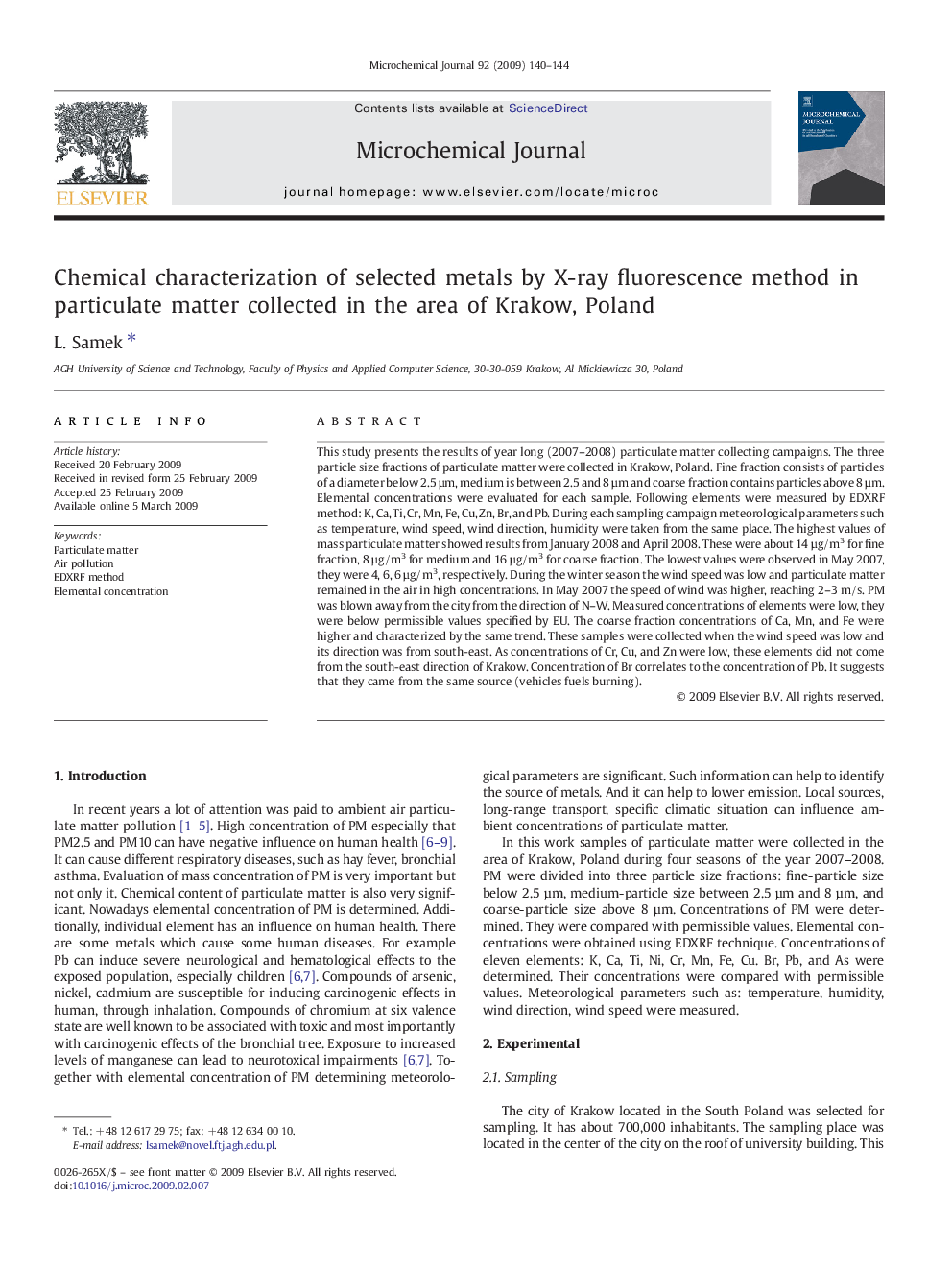| Article ID | Journal | Published Year | Pages | File Type |
|---|---|---|---|---|
| 1228007 | Microchemical Journal | 2009 | 5 Pages |
This study presents the results of year long (2007–2008) particulate matter collecting campaigns. The three particle size fractions of particulate matter were collected in Krakow, Poland. Fine fraction consists of particles of a diameter below 2.5 µm, medium is between 2.5 and 8 µm and coarse fraction contains particles above 8 µm. Elemental concentrations were evaluated for each sample. Following elements were measured by EDXRF method: K, Ca, Ti, Cr, Mn, Fe, Cu, Zn, Br, and Pb. During each sampling campaign meteorological parameters such as temperature, wind speed, wind direction, humidity were taken from the same place. The highest values of mass particulate matter showed results from January 2008 and April 2008. These were about 14 µg/m3 for fine fraction, 8 µg/m3 for medium and 16 µg/m3 for coarse fraction. The lowest values were observed in May 2007, they were 4, 6, 6 µg/m3, respectively. During the winter season the wind speed was low and particulate matter remained in the air in high concentrations. In May 2007 the speed of wind was higher, reaching 2–3 m/s. PM was blown away from the city from the direction of N–W. Measured concentrations of elements were low, they were below permissible values specified by EU. The coarse fraction concentrations of Ca, Mn, and Fe were higher and characterized by the same trend. These samples were collected when the wind speed was low and its direction was from south-east. As concentrations of Cr, Cu, and Zn were low, these elements did not come from the south-east direction of Krakow. Concentration of Br correlates to the concentration of Pb. It suggests that they came from the same source (vehicles fuels burning).
